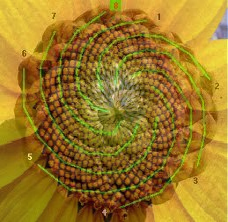
The Space Program: Make 100 Mini-Hubbles.
Let's put 100 telescopes in earth's orbit. Some might be 12-inch optical 'scopes; others perhaps infrared or x-ray. There is a long waiting list for use of the big telescopes. Because these orbiting 'scopes would be outside our atmosphere, they would be quite powerful. They could be made available to colleges' astronomy departments and others on a time-shared basis to perform their (sometimes unusual!) projects without formal approval, and without the long wait. Some supervision would be required for security reasons.
The cost of the project would be relatively low because of the light payloads, and because of the economy of scale of a small production run.
The long wait for access to a good telescope would be much reduced, and who knows what surprises our youngsters (from 12 to 112) would turn up!?

The Space Program: Use a Magic FPROM!
There's a crater on the far side of the moon that is about 1820 kilometers (1131 mi) in diameter, the Daedalus Crater. There has been a lot of interest in transforming this crater into a huge radio telescope [1].
Proposing that this crater doesn't need to be carved into a parabola. An alternative that would be both non-destructive and easier to do would be to compensate for any non-parabolic anomalies in the crater's geometry with an FPROM - a field-programmable read-only memory. The technology is similar, but less sophisticated than, the already existing adaptive optics used on the major optical telescopes today, to "see through" the earth's atmosphere, and they have to continually adapt to the shifting atmospheric conditions, in real-time. [2].
There would be a minor loss of efficiency, but it would be more than compensated by the huge size of the crater. This field-programmable memory could be periodically updated to compensate for changes in the crater's geometry due to meteorites, etc.
We would be able to crank the amplification of the receiver extremely high without worrying about electrical noise from the earth (television, coke machines! etc.): it will all be blocked by the moon's mass. At present, we can see 90% of the way to the edge of the known universe. Because of the extreme amplification, and of the huge diameter of this telescope, who knows: we may be able to see all the way out of this universe and perhaps even back into another universe next to ours!
Have I succeeded in arousing your curiosity?!
![]()
For now, we can make a quite valuable prototype of this FPROM technique using a volcanic crater somewhere here on earth.
- http://www.thelivingmoon.com/47john_lear/02files/Luna_Moonbase_Radio_Telescope.html
- http://adsabs.harvard.edu/abs/1993ARA%26A..31...13B
| Solving | Cancer | Method | Space | Fibonacci | Checkers | Map | |
|---|---|---|---|---|---|---|---|

| 
| 
| 
| 
| 
|
||